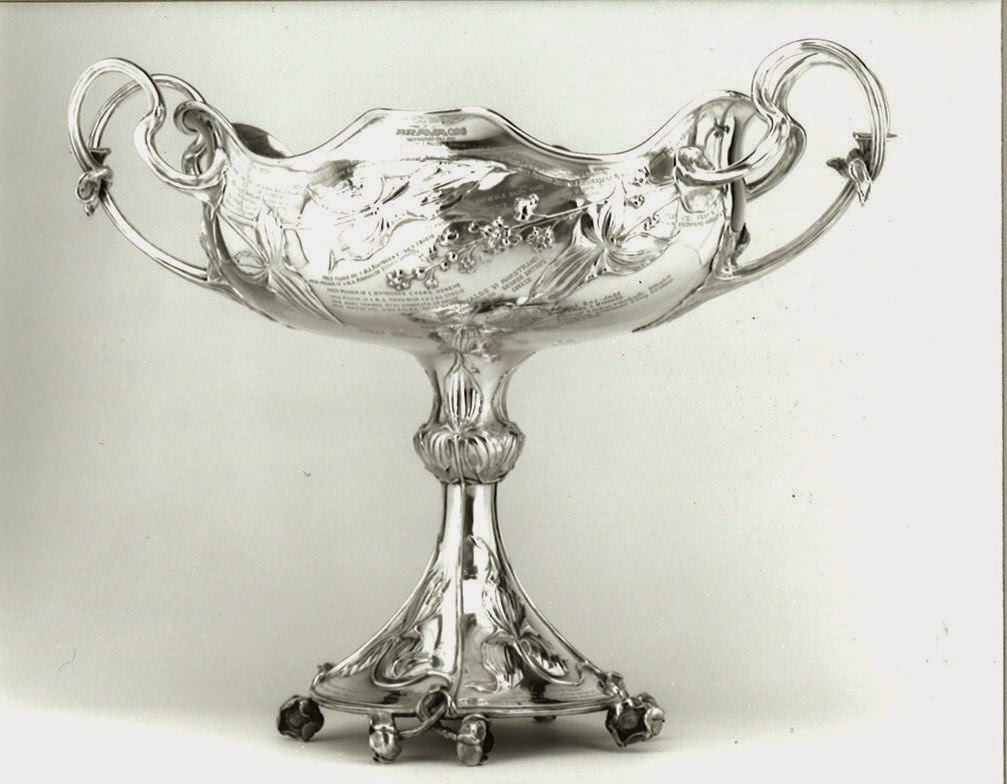Jockey Club (A 3232) was an interesting, if unsuccessful, One Tonner from the design board of Martin Billoch for the Argentinian entrepreneur Alberto Urani, and built by Ast.Sarmiento in Buenos Aires. She was designed and built in 1989 for the One Ton Cup and to compete in the Argentinian team for the Admiral's Cup in the same year. Her name came from her sponsor, a local brand of cigarettes.
 |
| Jockey Club sails upwind in the Solent during prior to the 1989 Admiral's Cup (Shockwave40 blog) |
 |
| Jockey Club sails downwind in fresh conditions (location unknown, photo Facebook) |
While Jockey Club carried a conventional rig in terms of spar manufacture (Sparcraft) and sails (Norths), the yacht had a number of obvious differences from the typical One Tonners of the period, with her rig set reasonably far aft, with the forestay well inset from the stem and the boom overhanging the deck/transom line. This meant that the cabin top mostly sat for'ard of the mast, and appeared to require an aftward extension to the cabin top to provide space for the companionway area. It also seems from the photo below that the vang strut was attached to the mast below the cabin profile. One can assume that the internal accommodation was somewhat compromised as a result of this arrangement.
 |
| Jockey Club in early trials (photo Seahorse) |
 |
| Jockey Club heads out of Lymington Marina on her way to a race during the 1989 Admiral's Cup - note the aftwards placement of her rig, and stepped cabin-top profile (Shockwave40 blog) |
 |
| Jockey Club sails downwind with one of her team-mates Tango Too |
The hull featured an attractive sheer, not dissimilar to earlier European One Tonners, but did not take advantage of IOR rule changes that had been invoked for the 1989 season that allowed a more upright transom arrangement that did not affect the measurement of the after girth stations. Jockey Club displayed the typical IOR hard point in the topside area of the maximum beam measurement, and this was married to an apparent concavity in the stern area with possibly less of a bustle around the skeg.
 |
| Jockey Club sailing upwind in the Solent off Hurst Castle (Shockwave40 blog) |
These design characteristics did not point to a new trend for One Tonners, as Jockey Club, while expected to perform in medium-to-heavy winds, put in only a very modest performance in the 1989 One Ton Cup in Naples, finishing 22nd of 28 boats, with placings of 25/24/27 in the first three races, before showing some improvement to finish with a 13th and 12th in the final two races.
 |
| Jockey Club sails her way back to Lymington Marina (note the aft rake in her rig) (Shockwave40 blog) |
Three months later Jockey Club joined team-mates Daphne and Tango Too in the 1989 Admiral's Cup, racing with a slightly increased rating of 30.66ft. Unfortunately Jockey Club was again an also-ran, finishing 37th of 42 boats in the series (with placings of 33/38/27/18/36/38), and 17th (of 22) One Tonner. Her team-mates were equally unspectacular and the Argentine team finished in last place. |
| Jockey Club racing in 1990 with a redesigned stern in response to changes to the IOR (photo Facebook) |
 Smiles was one
of about twenty J/41's that were built by J/Boats between 1984 and 1987,
and were notable campaigners in the IOR scene in the US over that
period. The J/41, designed by Rod Johnstone, was designed to rate as a
One Tonner (30.5ft IOR), with
a different shape to many of its peers, with a notable rocker, fine
ends and low wetted surface, giving it an edge in light airs.
Smiles was one
of about twenty J/41's that were built by J/Boats between 1984 and 1987,
and were notable campaigners in the IOR scene in the US over that
period. The J/41, designed by Rod Johnstone, was designed to rate as a
One Tonner (30.5ft IOR), with
a different shape to many of its peers, with a notable rocker, fine
ends and low wetted surface, giving it an edge in light airs.






































